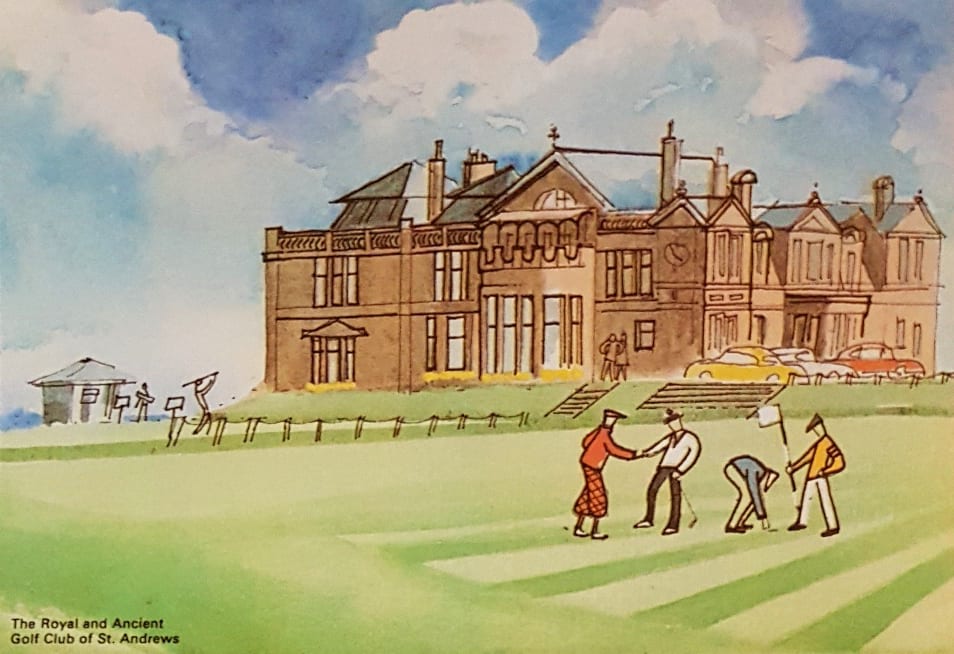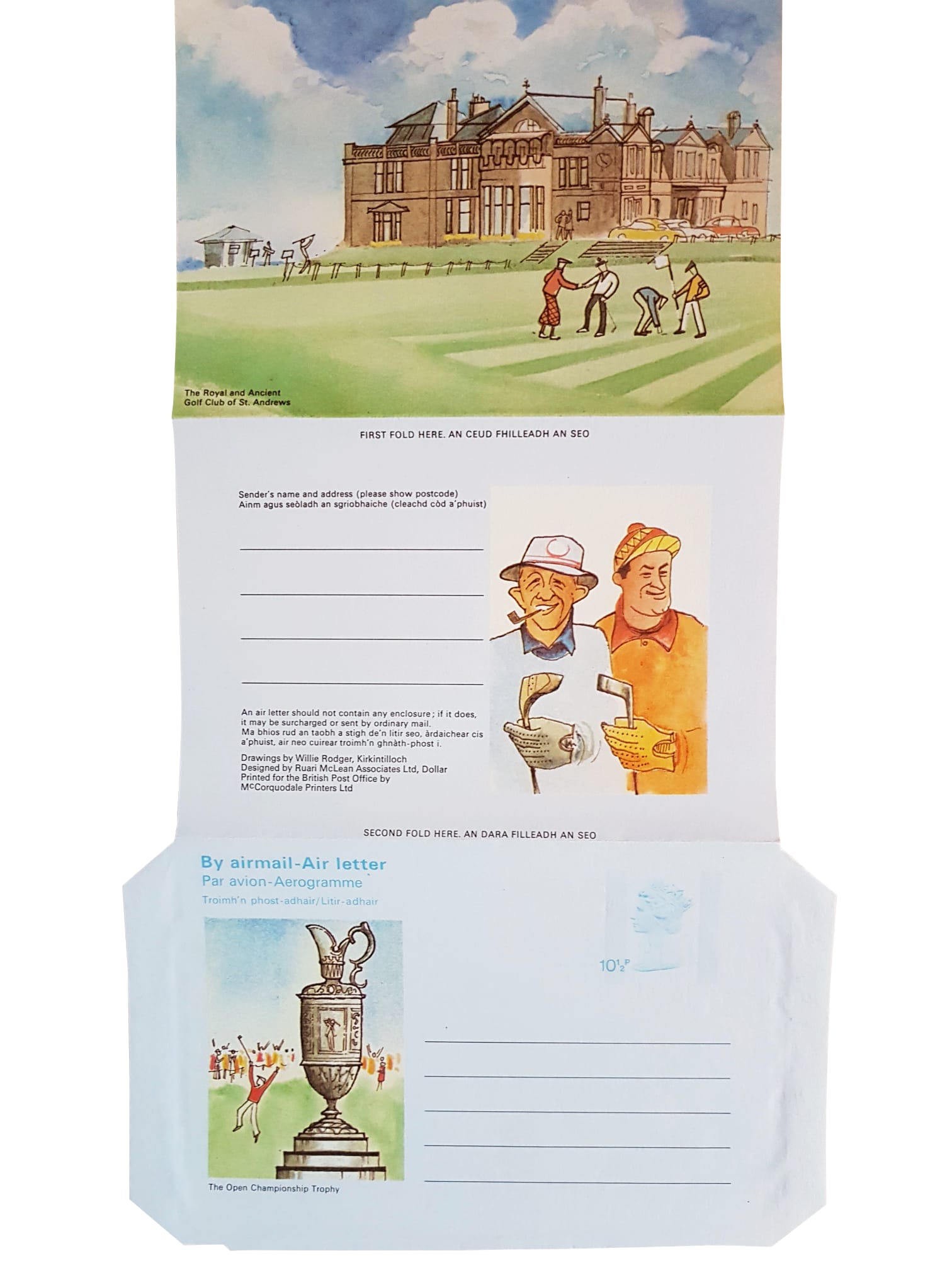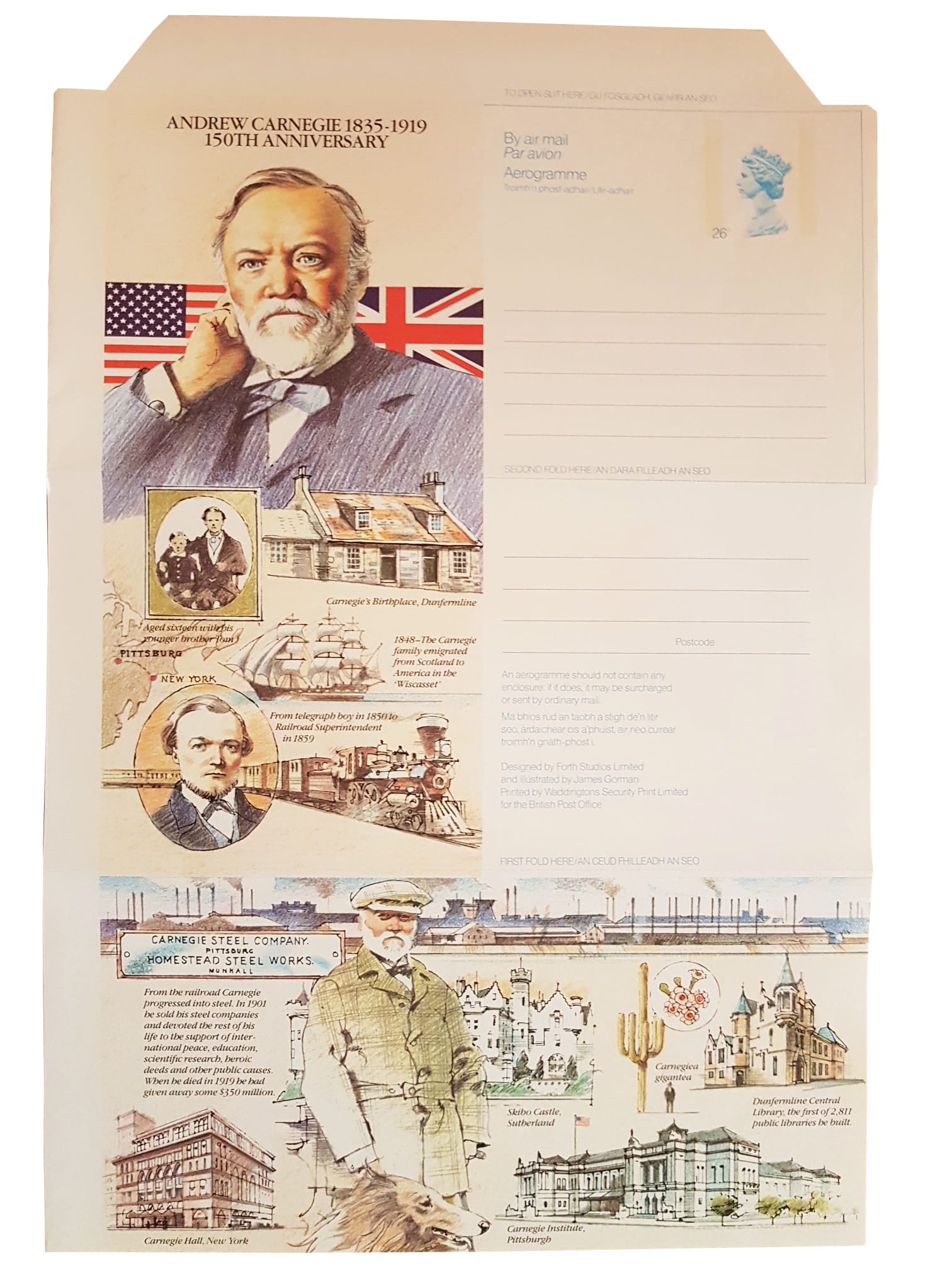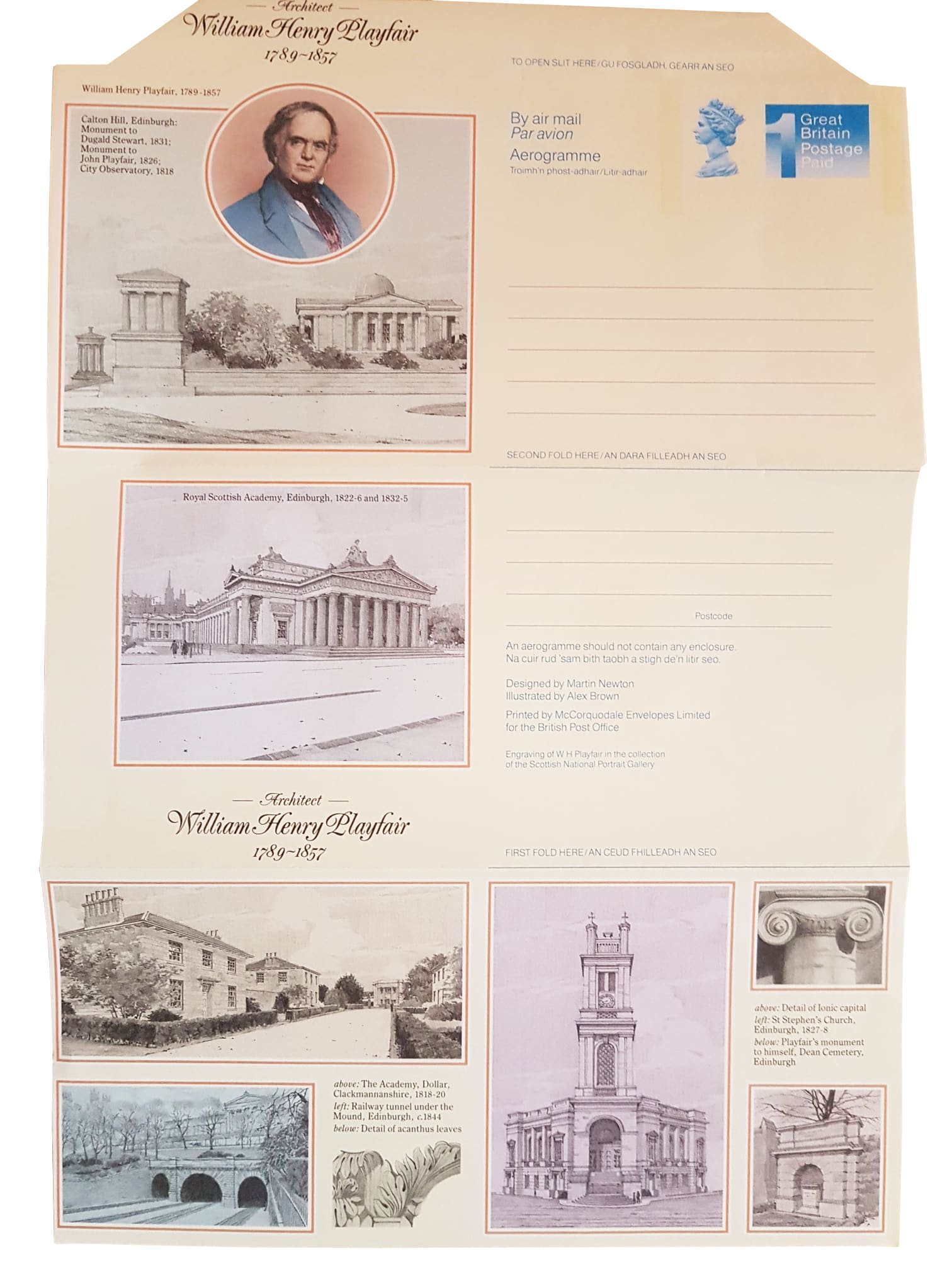
Back in 1826, when the [Royal] Scottish Academy of Painting, Sculpture, and Architecture was founded, we relied on the postal service for the transportation of written communication. Letters were carried by horse, or stagecoach over longer distances, and set charges were handwritten on the envelope by the local postmaster.
The postage stamp wasn’t introduced for a further fourteen years, and it wasn’t until 1924 that Britain issued its first commemorative stamp – a stamp that celebrates a specific event, rather simply carrying the portrait of the reigning sovereign. Today, we’re taking a look at stamps and aerogrammes that have either been designed by, or feature, Academicians and their work.
In 1978, and shrouded in absolute secrecy, the Scottish printmaker and future Academician Willie Rodger received a commission to submit designs for a set of 4 commemorative stamps. The stamps would be issued if a forthcoming referendum, to be held on 1 March 1979 secured enough votes in favour of Devolution for Scotland. It was agreed by the then Labour Government that the threshold would be 40% or more of the registered voters. Despite a slight majority in favour, the “yes” votes cast constituted just 32.8% of the electorate, and Devolution was not granted. The designs were then consigned to the archives of the Post Office Museum in London. Rodger’s pen, ink and watercolour designs focussed on the former Royal High School building on Calton Hill, designed by Thomas Hamilton RSA, which had been earmarked as the seat of the new devolved administration.
Willie Rodger RSA did however would go on to design an aerogramme for the Post Office the following year. An aerogramme is sheet of lightweight paper that is printed with a postal stamp, it can be folded to form its own envelope and therefore sent via airmail at a low cost due to it’s standard size, light weight, and lack of enclosures. Roger’s aerogramme would mark The Open being played at St Andrews. Again, his designs were in pen and ink and watercolour rather than the wood or linocut prints for which he was best known.

Future HRSA, Richard Demarco produced the design for the Post Office’s aerogramme issued for the Edinburgh International Festival in 1984. Demarco has long been a champion of the Edinburgh International Festival, and his selection as the commissioned artist was particularly appropriate. His design is typically enthusiastic and spontaneous, and perfectly captures the mood of the Festival City, her distinctive skyline beautifully drawn in Demarco’s inimitable and accurate line, full of colour, and adorned by a fluttering forest of flags.

One of the Academy’s most generous benefactors was the Dunfermline born steel manufacturer Sir Andrew Carnegie. He was responsible for instigating the Carnegie Travel Scholarship, which continues to be awarded today. In 1985, Carnegie featured on an aerogramme issued to commemorate the 150th Anniversary of his birth.

The Academy itself appeared on a Scottish aerogramme issued in 1989 to mark the bi-centenary of the birth of William Henry Playfair RSA, the architect of the original Royal Institution Building and its subsequent enlargement. The design of the aerogramme was by James Gorman who, though not a member of the RSA, had been an exhibitor from the 1960s to the 1980s in the RSA Annual Exhibition.

The late Dame Elizabeth Blackadder OBE RA RSA remains the only Royal Scottish Academician to have a complete set of designs appear on British postage stamps; a set of 5 stamps featuring her distinctive paintings of cats, which were issued on 17 January 1995. All of the cats depicted were known personally to Blackadder from her neighbourhood.

And most recently, Barbara Rae RSA had one of her vivid landscape paintings feature on one of the two £1.25 stamps in the set of six postage stamps issued on 5 June 2018 to commemorate the 250th Anniversary of the founding of the Royal Academy of Arts in London.

Explore RSA Collections further via our collections online portal.

